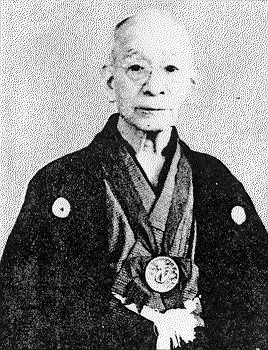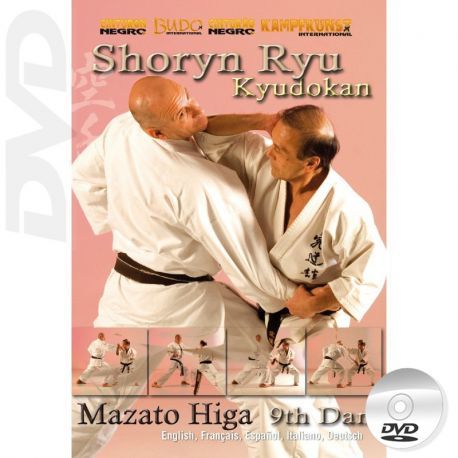Choshin Chibana 1885- 1969 “The Last Warrior of Shuri”
“The Last Warrior of Shuri”

Hanshi Choshin Chibana, was a 10th dan Okinawan martial artist who developed Shorin-ryu karate on what he had learned from Anko Itosu. He was the last of the pre-World War II karate masters, also called the "Last Warrior of Shuri”. Shorin-ryu is one of the major modern Okinawan martial arts and is one of the oldest styles of karate, chosen in honor of Samurai roots, and consistent with the original teachings of Anko Intosu.
Chibana was the first martial artist to establish a Japanese ryu name for an Okinawan karate style, calling Itosu's karate "Shorin-Ryu" (or "the small forest style"); however the system is much older, combining elements of the traditional Okinawan fighting styles of Shuri-te. Chibana is credited with creating the Kihon (basic) katas 1-5, the first katas taught to students., and kata Fugyugata an advanced kata.
In 1890, Choshin began his study of martial arts under Anko Itosu He trained under Itosu for thirteen years. Choshin practiced alone for five years after Itosu died and then opened his first dojo in Tori-Hori district in 1919. He later opened a second dojo in Kumojo district of Naha City. In August, 1964, in memory of the 50th anniversary of the death of Anko Itosu, Chibana Sensei erected a monument at the Itosu family tomb.
Chibana remained on the island of Okinawa during WW II, narrowly escaping death when Shuri was destroyed in the Battle of Okinawa 1945.When the war ended, he returned to Shuri from Chinen Village and began teaching again. From February 1954 to December 1958 he served as Karate Advisor and Senior Instructor for the Shuri Police Precinct. In May 1956, the Okinawa Karate Federation was formed, and he assumed office as its first President.
In 1957, Chibana received the title of Hanshi from the new Dai Nippon Butokukai (The Greater Japan Martial Virtue
Association) the first time the prestigious title was awarded to an Okinawan.In 1960, he received the First Sports Award from the Okinawa Times Newspaper for his overall accomplishments in the study and practice of traditional Okinawan Karate-do. On 29 April 1968, he was awarded the Order of the Sacred Treasure, 4th Class, by the Emporer of Japan. Notable students of Chibana include Arakaki Ankichi, Katsuya Miyahiro, Shugoro Nakazato, Nakama Chozo, and Yuchoku Higa.
By early 1950 the US Military became more tolerant, and Okinawans once again looked to Japan to re-establish their roots. The Butokukai was again recognized and opened its doors to a new breed of master teachers of the traditional martial arts. In 1956 the Butokukai was advised that the Okinawans had formed their own organization, and were in the process of standardizing the various branches of karate. By 1957 the Butokukai concluded Okinawans were leaning towards the Budo style of martial arts, and invited a number of individuals to be honored. Chibana was one of these.
Chibani Sensei was a man of Butoku. Asked by the most senior martial arts experts of Butokukai what he considered the most
important quality for a traditional martial artist, Chibana replied:
“Butoku (Martial Virtue: Martial Honor)! We are born with only one sole possession…this is our name. When we die, all material things mean nothing. We die with our only possession…our name. We strive to bring honour to our name. We, as teachers of the martial arts, have an even deeper responsibility...we mold and guide the young. We must develop a strong martial honor in order to do this. This is the road I follow. This is what shorin ryu karatedo is…
my martial honor and responsibility.”
These powerful words mark the legacy of Chibana’s strong, heroic, and honorable leadership. Today’s generations of Shorin-ryu practitioners are well equipped to keep and spread the trust of his legacy—a legacy that never ends.
To learn more about Shorin-Ryu, please check out: Shoryn Ryu Karate Kyudokan by clicking on the image below.

